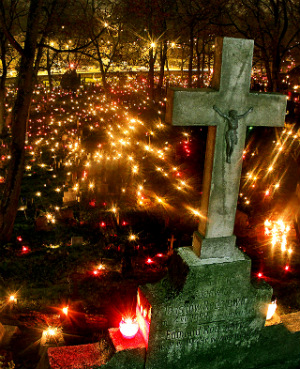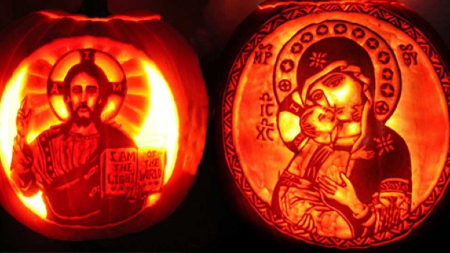We ask you, humbly: don't scroll away.
Hi readers, it seems you use Catholic Online a lot; that's great! It's a little awkward to ask, but we need your help. If you have already donated, we sincerely thank you. We're not salespeople, but we depend on donations averaging $14.76 and fewer than 1% of readers give. If you donate just $5.00, the price of your coffee, Catholic Online School could keep thriving. Thank you.Help Now >
William Flete
FREE Catholic Classes
An Augustinian hermit friar, a contemporary and great friend of St. Catherine of Siena ; the exact place and date of his birth are unknown and those of his death are disputed. He was an English mystic, and lived in the latter half of the fourteenth century; educated at Cambridge, he afterwards joined the Austin Friars in England, but desiring a stricter than they were living, and hearing that there were two monasteries of his order which had returned to primitive discipline near Siena, he set out for Italy. On reaching the forest of Lecceto near Siena, in which one of these monasteries stood, he found the place, which abounded in caves, suited to the contemplative life, that with the consent of his superiors he joined this community. Henceforth he spent his days in study and contemplation in one of these caves, and returned to the monastery at night to sleep. He was called the "Bachelor of the Wood"; here he became acquainted with St. Catherine, who occasionally visited him at Lecceto and went to confession to him. He had so great a love for solitude, that he declined to leave it when invited by Pope Urban VI to go to Rome, to assist him with his counsel at the time of the papal schisms then disturbing the Church.
He wrote a long panegyric on St. Catherine at her death, which, with another of his works, is preserved in the public library at Siena. For at least nineteen years he led a most holy and austere life in this wood, and is said by Torellus to have returned to England, immediately after St. Catherine's death in 1383, and, after introducing the reform of Lecceto, to have died the same year. Others say he died in 1383, but there is no mention of his death in the book of the dead at Lecceto, and the exact date of it is uncertain. He was considered a saint by his contemporaries.
None of his works have been printed: they consist of six manuscripts ; (1) an epistle to the provincial of his order; (2) a letter to the doctors of the province; (3) an epistle to the brethren in general; (4) predictions to the English of calamities coming upon England (in this he prophesied that England would lose the Catholic faith ); (5) divers epistles ; (6) a treatise on remedies against temptations. A fifteenth century manuscript of this last is now in the University Library at Cambridge, to which it was presented by George I.
Join the Movement
When you sign up below, you don't just join an email list - you're joining an entire movement for Free world class Catholic education.
-

-
Mysteries of the Rosary
-
St. Faustina Kowalska
-
Litany of the Blessed Virgin Mary
-
Saint of the Day for Wednesday, Oct 4th, 2023
-
Popular Saints
-
St. Francis of Assisi
-
Bible
-
Female / Women Saints
-
7 Morning Prayers you need to get your day started with God
-
Litany of the Blessed Virgin Mary
All Saints' Day, Halloween and All Souls' Day: What's the difference?
-

Should Christians Celebrate Halloween?
-

Since when did Halloween become a Christian holiday?
-
ADORABLE: A Little Boy's Heartfelt Lunchtime Prayer
-
Scientists Decode 3,000-Year-Old Babylonian Tablet, Revealing Potential Location of Noah's Ark
Daily Catholic
 Daily Readings for Friday, November 01, 2024
Daily Readings for Friday, November 01, 2024 St. Valentine Berrio-Ochoa: Saint of the Day for Friday, November 01, 2024
St. Valentine Berrio-Ochoa: Saint of the Day for Friday, November 01, 2024 Litany of the Saints: Prayer of the Day for Friday, November 01, 2024
Litany of the Saints: Prayer of the Day for Friday, November 01, 2024- Daily Readings for Thursday, October 31, 2024
- St. Wolfgang: Saint of the Day for Thursday, October 31, 2024
- Memorare: Prayer of the Day for Thursday, October 31, 2024
![]()
Copyright 2024 Catholic Online. All materials contained on this site, whether written, audible or visual are the exclusive property of Catholic Online and are protected under U.S. and International copyright laws, © Copyright 2024 Catholic Online. Any unauthorized use, without prior written consent of Catholic Online is strictly forbidden and prohibited.
Catholic Online is a Project of Your Catholic Voice Foundation, a Not-for-Profit Corporation. Your Catholic Voice Foundation has been granted a recognition of tax exemption under Section 501(c)(3) of the Internal Revenue Code. Federal Tax Identification Number: 81-0596847. Your gift is tax-deductible as allowed by law.






 Daily Readings for Friday, November 01, 2024
Daily Readings for Friday, November 01, 2024 St. Valentine Berrio-Ochoa: Saint of the Day for Friday, November 01, 2024
St. Valentine Berrio-Ochoa: Saint of the Day for Friday, November 01, 2024 Litany of the Saints: Prayer of the Day for Friday, November 01, 2024
Litany of the Saints: Prayer of the Day for Friday, November 01, 2024

